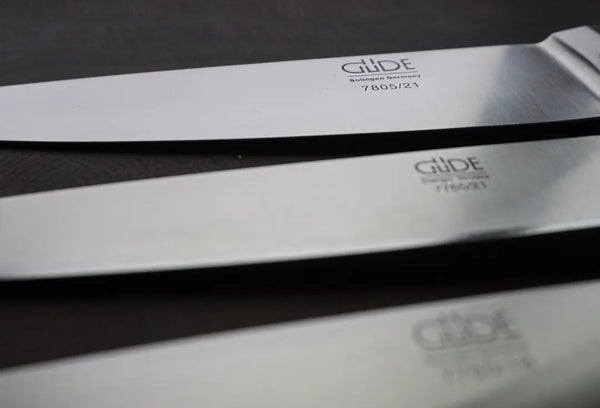
Great kitchen knives – which ones should I buy?
Kitchen knife or chef's knife?
“The chef’s knife” is, on the one hand, the classic knife in a kitchen, the most used tool by every cook.
"Chef's knives" also refers to all knives used in the kitchen. There are many different knife shapes for many different purposes.
In this article, we'll explain the most important of these different knife shapes. This article isn't aimed at seasoned, experienced cooks, of course. Those who have been cooking for a long time don't necessarily need to read this.
A newcomer to the field of kitchen knives, such as an apprentice or someone new to the hobby of cooking, can find out about the wide range of options available here in order to find the right knife for every task in the kitchen.
Or maybe you'd like to give a knife as a gift but aren't very familiar with the subject? Then contact us – we'd be happy to help you find the right knife for you.
Of course, not all knives in a category are the same. They differ in subtleties such as steel hardness or handle choice. Small nuances can sometimes lead to a big price difference.
We are always available for personal advice.
Kitchen knives – there are these different types:
chef's knife
The basic, most important kitchen knife in our latitudes: a relatively heavy, robust knife with blade lengths of approximately 15 to 25 cm. The most commonly used classic chef's knives have blades around 20 cm. As an example, we show you the "Franz Güde" chef's knife with a blade length of 21 cm.

Personal preference determines the choice of blade. Shorter blades are lighter and more maneuverable and are often used by women because they require less effort. Longer blades are more substantial and require a bit more force.
If you're a beginner who's unsure about your technique and doesn't have much experience, we recommend a medium size of around 20 cm, which you can't really go wrong with. Once you gain experience, you can always upgrade to a different size.
With this versatile knife, you can cut meat and fish, fruit and vegetables. You can perform the typical rocking motion and even do some careful chopping.
Santoku
After the classic chef's knife, we come to the Santoku. This knife shape originating in Japan is, like the chef's knife, an all-rounder for many tasks. In Japan, it's the standard knife, analogous to the chef's knife here. It's gaining increasing popularity here and is even replacing the classic chef's knife for some chefs. As an example, here's a version of the Kai from the Kai Shun Tim Mälzer series:

Santoku means something like “knife of the three virtues”: it is equally suitable for meat, fish and vegetables.
The blade length is usually around 18 cm, although shorter and longer versions are also available. Personal preference is the deciding factor.
Santoku with hollow grind
A special feature are variants with a hollow grind (the so-called "Kullen"). Here you can see the Santoku from the Red Spirit series by Dick :

The dimple is a small indentation on the blade. This facilitates cutting, especially with moist materials. The material to be cut sticks less to the blade because the dimple reduces the contact surface.
Whether you choose a chef's knife or a santoku is a matter of personal preference. The santoku is usually a bit shorter and has a straighter edge, while the chef's knife has a slightly curved blade.
Paring knife / Tournier knife
This small specialist is used for peeling round fruits and vegetables. The curved blade adapts perfectly to the curves and reduces waste. Because of its shape, it's also called a "bird's beak."

A blade length of around 6 cm has proven to be a good average. This is the Güde Alpha paring knife.
office knife
The paring knife is a small, nimble all-rounder for cutting, cleaning, and peeling onions, potatoes, herbs, garlic, and many other prep tasks. The blade length is usually around 9 cm.

As an example, you can see here a Nesmuk Janus office knife with a 9 cm blade length and an elegant wooden handle made of Bahia rosewood.
carving knife
The larding knife is primarily used—as the name suggests—for larding. This involves piercing holes in the meat through which strips of bacon are threaded, adding flavor to the dish. It also performs many prep tasks (similar to a paring knife), such as cleaning fruit and vegetables, chopping herbs, and slicing onions.
Here we show you the Güde Alpha paring knife with an 8 cm blade length. You can also find paring knives with 10 to 12 cm blades.

Filleting knife / filleting knife
A very special, slim knife for filleting meat and fish. It allows for precise cuts and the precise removal of skin and bones. The blade is often flexible. The length is usually between 15 and 18 cm.

Here is a particularly slim example: the Wüsthof Classic Ikon filleting knife.
bread knife
Cutting a slice from a loaf of bread with a regular kitchen knife is difficult because the crust is too hard. For this purpose, there's a specialist among kitchen knives: the bread knife (or bread saw), which today almost always has a serrated edge. The blade length is usually between 23 and 27 cm.
The serrated edge was developed by Franz Güde in 1931. The Güde company remains a renowned manufacturer of such bread knives today. The author has enjoyed using the Güde Alpha Olive 32 cm bread knife for years.

Pastry knife
A close relative of the bread knife, it also features a long, serrated blade. Since cakes and tarts are often quite large in diameter, the blade should be at least 26 cm long. The serrated edge allows for quick and clean cutting of cakes and tarts without fraying the edges. The tip is usually rounded.

By the way, some chefs also use a pastry knife as an alternative to a chef's knife.
Boning knife / boning machine
The specialist for removing meat from the bone and for removing tendons and skin. The blade length is ideally around 15 cm. The blade is slim and tapered. Some versions are flexible.

Here is the Felix Solingen Platinum boning knife with a 15 cm blade length.
tomato knife
Tomatoes are difficult to cut. Therefore, a special tomato knife with a slight serration is often used. It usually has a blade length of about 15 cm. An example:
Kai Shun Classic Tomato Knife (15 cm) .

Other types of fruit and vegetables can also be cut easily.
Salmon knife
The challenge: cutting thin slices from a whole salmon. This requires a special tool, usually with a very long blade (around 30 cm), which is slim and often flexible. A hollow grind allows the knife to glide more easily through the fish. An example: the Wüsthof Classic Ikon Salmon Knife (32 cm) .

ham knife
This knife is similar to the salmon knife, but the blade is usually slightly shorter. It is designed for the finest slices of ham and can also be used as a carving knife.

Here you can see the Kai Shun Classic White ham knife with a 23 cm blade length.
Chinese chef's knife
Often mistaken for a cleaver, it's actually the all-purpose knife in Chinese cuisine and not intended for chopping hard bones. The wide blade is practical for transporting the cut meat directly into the pot.
Although it looks like a cleaver, it shouldn't be used for chopping bones, as the edge is too fine for that. However, it's ideal for cutting meat, fish, and vegetables, or chopping herbs. Here's the Nesmuk Janus Chinese Chef's Knife :

Sashimi / Yanagiba
The typical Japanese knife for sushi and fish. It is usually single-edged (yanagiba) and requires a certain amount of skill, as the grind is more difficult to handle. Here is a Kasumi Masterpiece Sashimi with a 21 cm blade:

Nakiri
This Japanese kitchen specialist is also primarily used for chopping vegetables and herbs. The unusual blade shape requires some practice, but it feels comfortable in the hand afterward. Contrary to popular belief, the nakiri is not suitable for chopping because the edge is finely ground. Here is a Kasumi Masterpiece Nakiri :

Deba
A deba is single-edged and has a thick blade spine, making it very robust. The single-edged grind allows for excellent cutting control. Primarily used for fish, it can also handle rough work. One example is the Kai Wasabi Black Deba (21 cm) :

carving knife
A relatively slim knife, usually with a blade length of around 20 cm, designed for carving meat and poultry. Combined with a carving fork, it can also be used for carving at the table. A carving set is often useful for this purpose.
For example, the carving set from the Chroma type 301 series (colloquially called “Porsche knives”), which stands out due to its all-steel construction.

As you can see, there are a wide variety of kitchen knives. This list is not exhaustive, but the most important types are mentioned here. There are many similarities and overlaps, which is why consulting a knowledgeable professional can be helpful.
If you are about to make a purchase and are unsure which knife to choose, please feel free to call us or contact us via email or WhatsApp.






